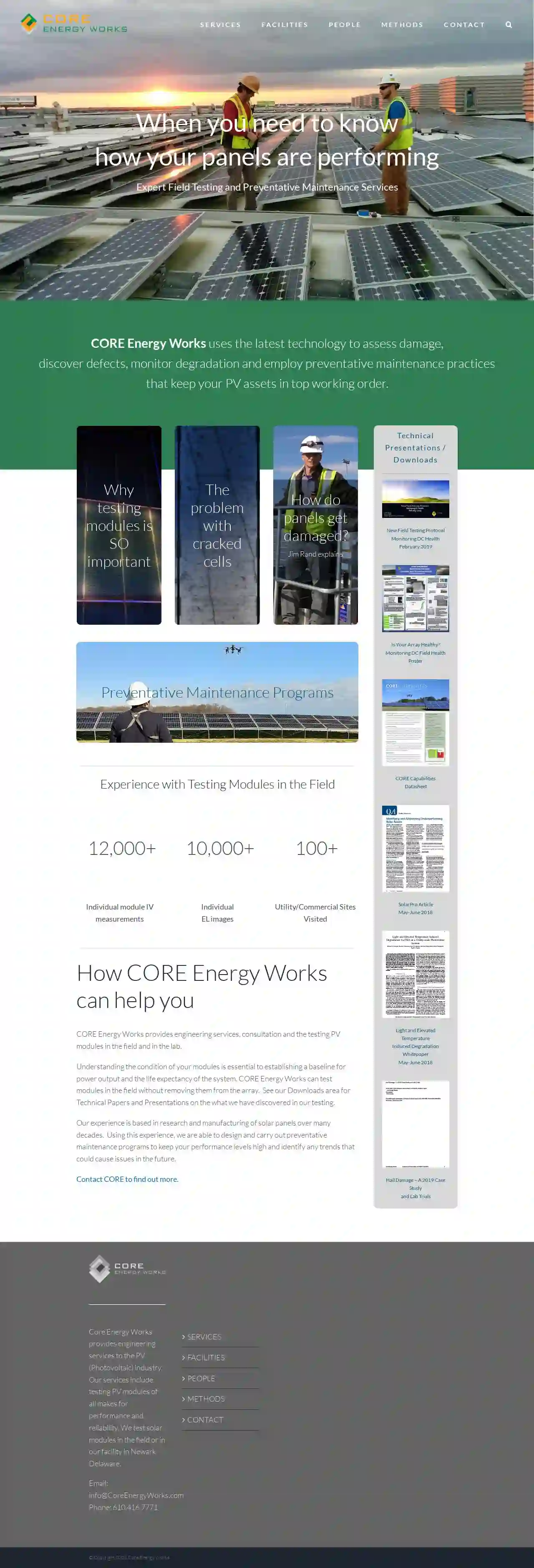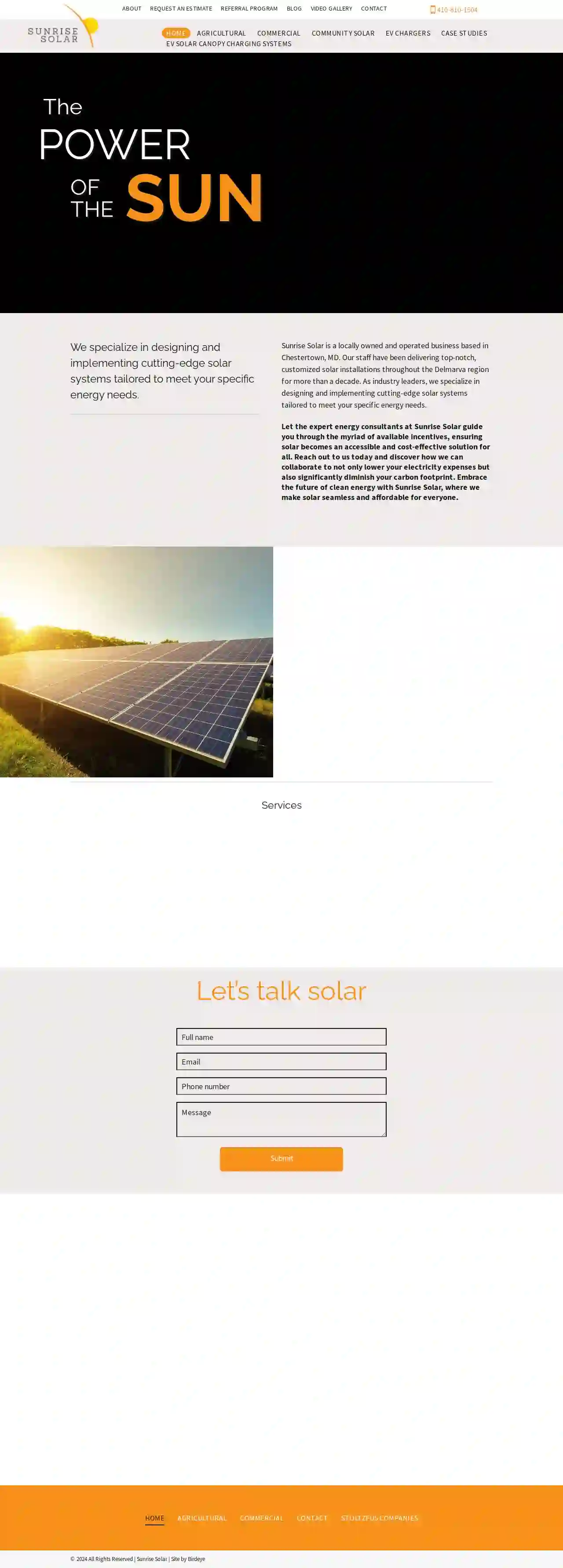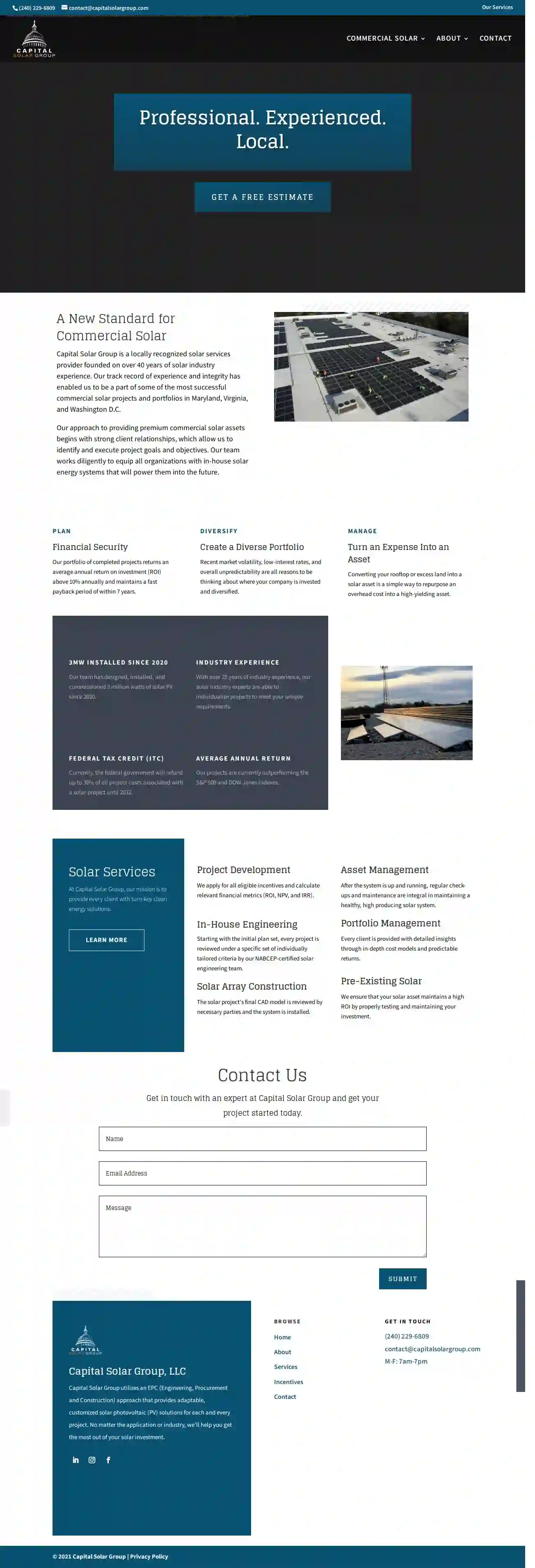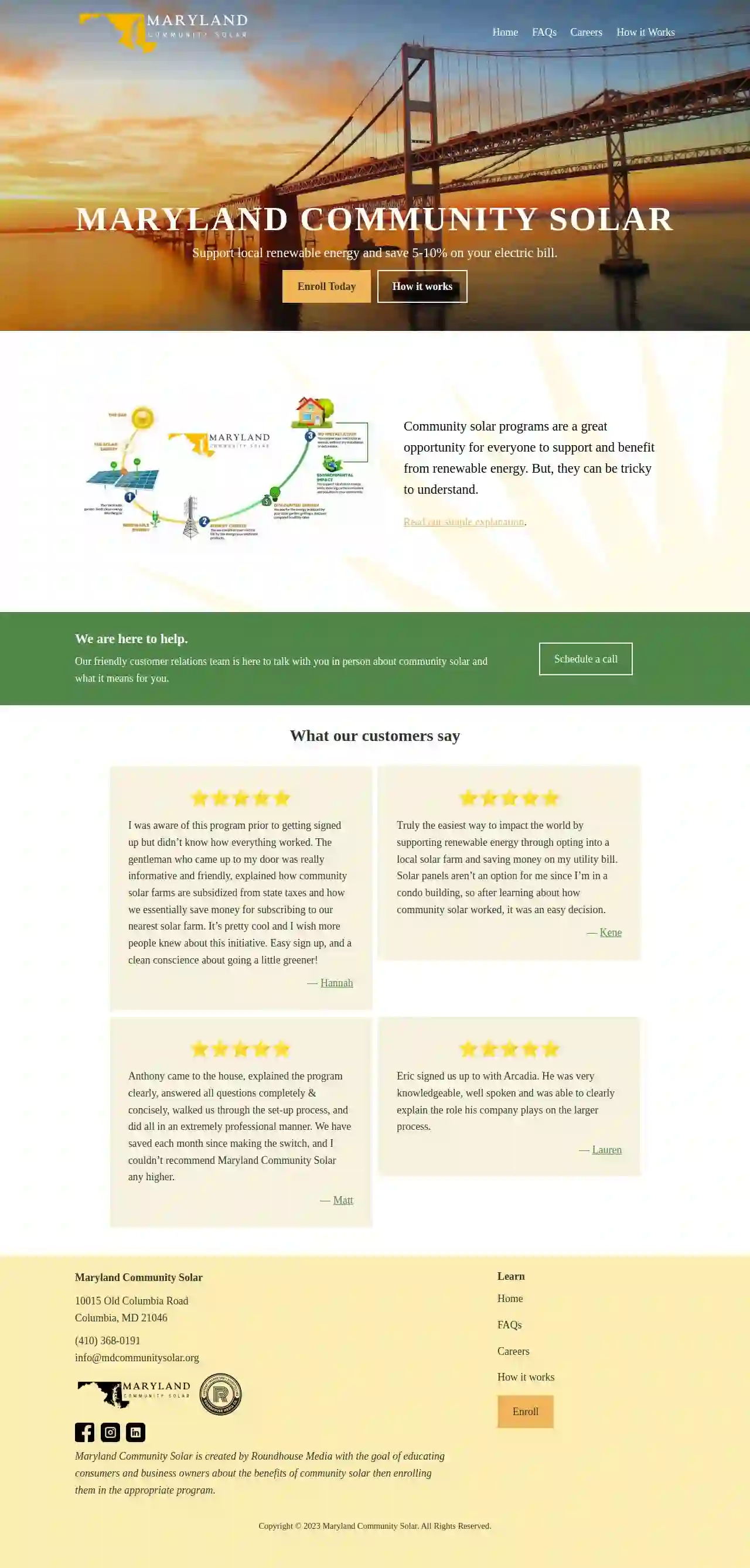Solar Installers Timonium
Best Solar Company in Timonium
Get multiple Solar Panel Installers quotes for your project today! Compare profiles, reviews, accreditations, portfolio, etc... and choose the best service.

Core Energy Works, LLC
52 reviewsNewark, Delaware, 19702, USCORE Energy Works provides engineering services to the PV (Photovoltaic) industry. Our services include testing PV modules of all makes for performance and reliability. We test solar modules in the field or in our facility in Newark Delaware.
- Services
- Why Us?
- Our Team
- Gallery
Get Quote
Sunrise Solar Inc.
55 reviewsChestertown, MD, Not provided, 6408 Church Hill Rd, 21620, USSunrise Solar is a locally owned and operated business based in Chestertown, MD. Our staff have been delivering top-notch, customized solar installations throughout the Delmarva region for more than a decade. As industry leaders, we specialize in designing and implementing cutting-edge solar systems tailored to meet your specific energy needs.
- Services
- Why Us?
- Accreditations
- Our Team
- Testimonials
- Gallery
Get Quote
Capital Solar Group
51 reviews123 Main St, Suite 100, Washington, 20001, USCapital Solar Group is a locally recognized solar services provider founded on over 40 years of solar industry experience. Our track record of experience and integrity has enabled us to be a part of some of the most successful commercial solar projects and portfolios in Maryland, Virginia, and Washington D.C. Our approach to providing premium commercial solar assets begins with strong client relationships, which allow us to identify and execute project goals and objectives. Our team works diligently to equip all organizations with in-house solar energy systems that will power them into the future.
- Services
- Why Us?
- Accreditations
- Gallery
Get Quote
The Solar Brokers USA
533 reviews1601 Melford Blvd, Suite 400, Bowie, 20715, USSolar Brokers USA is a Mid-Atlantic based solar specialist located in Bowie, MD. We work with the top solar companies located in your area and state, including solar installers with home bases and offices in Maryland, Virginia, Pennsylvania, Delaware, DC and West Virginia. Save with Solar, easily. Purchase or lease a solar system from the comfort of your home. We also are able to offer solar programs across the USA with our Nationwide partners such as Freedom Forever and SunPower. Want to know how solar can work for your home or business? Call us at 443-758-0947 to schedule an in-home or virtual appointment, or simply to discuss solar in more detail.
- Services
- Why Us?
- Accreditations
- Our Team
- Testimonials
- Gallery
Get Quote
Solar Daddy
201 Ritchie Rd, Bldg D, Capitol Heights, 20743, USSolar Daddy is a trusted solar supplier, installer, and one-stop shop for financing. They offer a 60-day installation guarantee and a 25-year production guarantee. Their services include expert advice on installing solar power systems, high-quality installations for homeowners, and partnerships with top area contractors. They operate in Washington DC, Maryland, Virginia, Florida, New Jersey, North Carolina, and Pennsylvania.
- Services
- Why Us?
- Testimonials
- Gallery
Get Quote
Maryland Community Solar
4.911 reviews10015 Old Columbia Road, Columbia, MD 21046, 21046, USMaryland Community Solar is a program that allows consumers and business owners to support local renewable energy and save 5-10% on their electric bill. The program is created by Roundhouse Media with the goal of educating and enrolling individuals in the appropriate community solar program.
- Services
- Why Us?
- Accreditations
- Our Team
- Testimonials
- Gallery
Get Quote
Solar Sales Consultant-DC
4700 14th St NW, Washington, DC, 20011, USSolar Solution is the largest Washington D.C.-based residential solar PV developer and installer. With 4.8 Stars on Google Reviews, Solar Solutions has more positive reviews than any other DC based provider. Driven by the pursuit of a cleaner, healthier America, Solar Solution provides a clean energy option through systems installed on the rooftops of homes and businesses. We work to educate our community on how solar systems work, the installation process, and government incentives available to offset costs.
- Services
- Why Us?
- Accreditations
- Our Team
- Testimonials
- Gallery
Get Quote
Skywave Solar
510 reviews101 Skipjack Road, Prince Frederick, 20678, USSkywave Solar is a locally owned and operated company located in Southern Maryland with years of industry experience working with PV solar system owners, roofing companies, and asset management companies. They are committed to delivering unrivaled optimized PV solar system maintenance and service. Their mission is to protect and maintain solar panel system investments through excellence in maintenance service and an unparalleled customer experience.
- Services
- Why Us?
- Accreditations
- Gallery
Get Quote
Why Free Solar Company
512 reviewsSuite 100, Washington, DC, 123 Solar Street, 20001, USWhy Free Solar Company specializes in installing custom solar systems for a variety of properties, including single-family homes, townhouses, ground mounts, carports, large office buildings, churches, and schools. They serve all countries in Maryland, Northern Virginia, and the District of Columbia, including the following regions: Connecticut, Florida, Georgia, Illinois, Massachusetts, New Jersey, Nevada, North Carolina, Ohio, Pennsylvania, Rhode Island, South Carolina, Texas, Maryland, Virginia, Washington DC, and, Delaware. Their services include Solar Renewable Energy Credits (SRECs), The Investment tax credit (ITC), and Net Metering. They offer a performance guarantee, save thousands of dollars, and provide tree removal and roof repair for qualifying homes.
- Services
- Why Us?
- Gallery
Get Quote
Revolution Solar
526 reviewsRevolution Solar, Washington, DC, 123 Solar Street, 20001, USRevolution Solar is a leading provider of solar energy solutions in Washington, DC, and Baltimore. They offer a range of services including solar panel installation, solar panel replacement, rooftop solar systems, solar ground mounts, solar rooftop decks, solar pergolas, solar batteries, and commercial solar services. Their mission is to empower home and business owners to leverage clean, sustainable solar power. They have completed the most solar panel installation projects in Washington, DC, and constantly adopt innovative and efficient technologies.
- Services
- Why Us?
- Accreditations
- Our Team
- Testimonials
- Gallery
Get Quote
Over 4,210+ Solar Contractors registered
Our solar providers operate in Timonium and surrounding areas!
SolarCompaniesHub has curated and vetted the Best Solar Contractors arround Timonium. Find the most trustworthy contractor today.
Frequently Asked Questions About Solar Installers
- System size (measured in kilowatts, or kW)
- Type of solar panels (monocrystalline, polycrystalline, thin-film)
- Roof complexity (pitch, size, obstructions)
- Labor costs in your area
- Available incentives and rebates
- System size
- Roof complexity
- Weather conditions
- Permitting and inspections
- Installer's schedule
- Contact SolarCompaniesHub: We make it simple to connect with reputable Solar Installers in your area.
- Get Free Quotes: Request free quotes from multiple installers to compare prices, systems, and warranties.
- Schedule a Site Assessment: A qualified installer will visit your property to assess your roof, energy needs, and discuss your goals.
- Review Your Proposal and Contract: Carefully review the proposed system, financing options, and warranties before signing a contract.
- Installation and Activation: Once the contract is signed, the installer will obtain necessary permits, schedule the installation, and activate your solar system.
What is the average cost of solar panel installation in USA?
How long does it take to install solar panels?
What happens if my roof needs to be replaced after I install solar panels?
How do I get started with solar panel installation?
What is the average cost of solar panel installation in USA?
- System size (measured in kilowatts, or kW)
- Type of solar panels (monocrystalline, polycrystalline, thin-film)
- Roof complexity (pitch, size, obstructions)
- Labor costs in your area
- Available incentives and rebates
How long does it take to install solar panels?
- System size
- Roof complexity
- Weather conditions
- Permitting and inspections
- Installer's schedule
What happens if my roof needs to be replaced after I install solar panels?
How do I get started with solar panel installation?
- Contact SolarCompaniesHub: We make it simple to connect with reputable Solar Installers in your area.
- Get Free Quotes: Request free quotes from multiple installers to compare prices, systems, and warranties.
- Schedule a Site Assessment: A qualified installer will visit your property to assess your roof, energy needs, and discuss your goals.
- Review Your Proposal and Contract: Carefully review the proposed system, financing options, and warranties before signing a contract.
- Installation and Activation: Once the contract is signed, the installer will obtain necessary permits, schedule the installation, and activate your solar system.